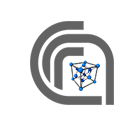The seminar will be held on Zoom https://zoom.us/j/99802385926 Meeting ID: 998 0238 5926
Magnetic Manipulation of Multiferroic Heusler Films by Martensitic Microstructure Engineering
Milad Takhsha (milad.takhsha@imem.cnr.it)
IMEM-CNR, Parma, Italy
Imagine reshaping the internal structure of a material to control its magnetism—this is exactly what we're doing with Heusler films, leading to smarter, more adaptable magnetic technologies.
Magnetic shape-memory (MSM) Heuslers are multiferroic materials that show a strong coupling between magnetic, thermal, and mechanical properties. Their multifunctional character arises from a phase transformation between low-temperature martensitic and high-temperature austenitic phase [1]. In particular, epitaxial Ni-Mn-Ga thin film systems are the benchmark for possible integration in smart micro/nanodevices such as sensors, energy harvesters, and actuators [2].
The ability to control the martensitic microstructure, which rules the magnetic characteristics of these films at different length scales, is the key point for the optimization of their magnetic functional properties. The low-temperature martensite phase of epitaxial Ni-Mn-Ga films, having film(001)//underlayer(001)//substrate(001) crystallographic relation, evolves either of both or one of the differently oriented hierarchical twinning configurations, where magnetic domain direction is alternatively out of plane and in plane (X-type) or in plane (Y-type). Different arrangements of these twinning configurations give rise to various magnetic properties [3]. The idea of controlling these twinning configurations in Ni-Mn-Ga films was developed in Parma a few years ago. Since then, we have introduced novel methods for martensitic microstructure engineering by including many parameters such as composition, thickness, underlayer/substrate, growth conditions, and post-growth treatments [4-10].
Here, I will present a short introduction to the material functionality and characteristics, then I will continue with an overview of the microstructure engineering methods we have developed, and I will conclude with the recent advancement in this interesting topic.
[1] O. Heczko et al. MRS Bull. 47 (2022): 618-627.
[2] L. Fink et al. Adv. Funct. Mater. 33 (2023) : 2305273.
[3] A. Diestel et al. J. Phys. Condens. Matter. 25 (2013): 266002.
[4] P. Ranzieri et al. Acta Mater. 61 (2013): 263-272.
[5] P. Ranzieri et al. Adv. Mater. 27 (2015): 4760-4766.
[6] M. Campanini et al. Small, 14 (2018): 1803027.
[7] M. Takhsha Ghahfarokhi et al. Acta Mater. 187 (2020): 135-145.
[8] M. Takhsha Ghahfarokhi et al. Appl. Mater. Today 23 (2021): 101058.
[9] M. Takhsha Ghahfarokhi et al. Acta Mater. 221 (2021): 117356.
[10] M. Takhsha et al. (2025): arXiv: 2505.02696.






